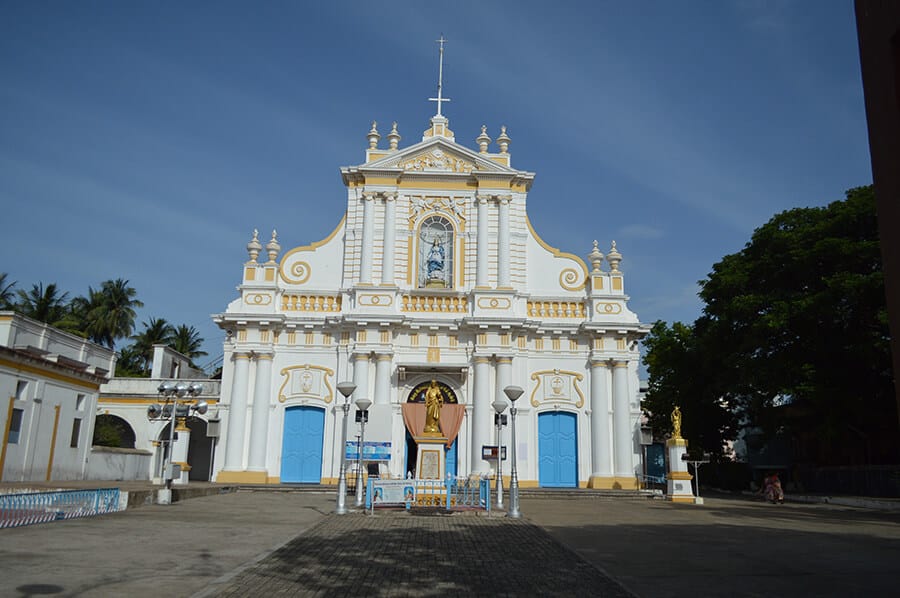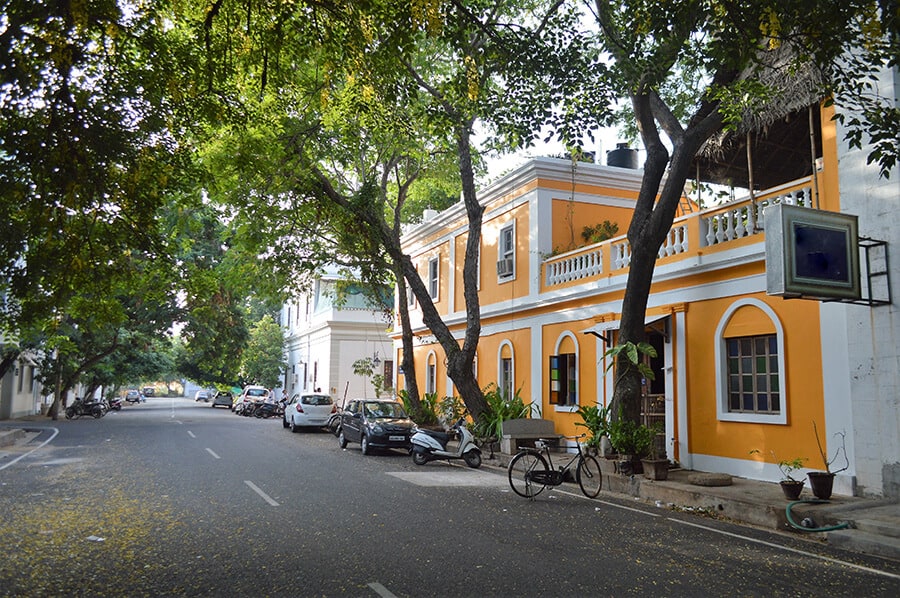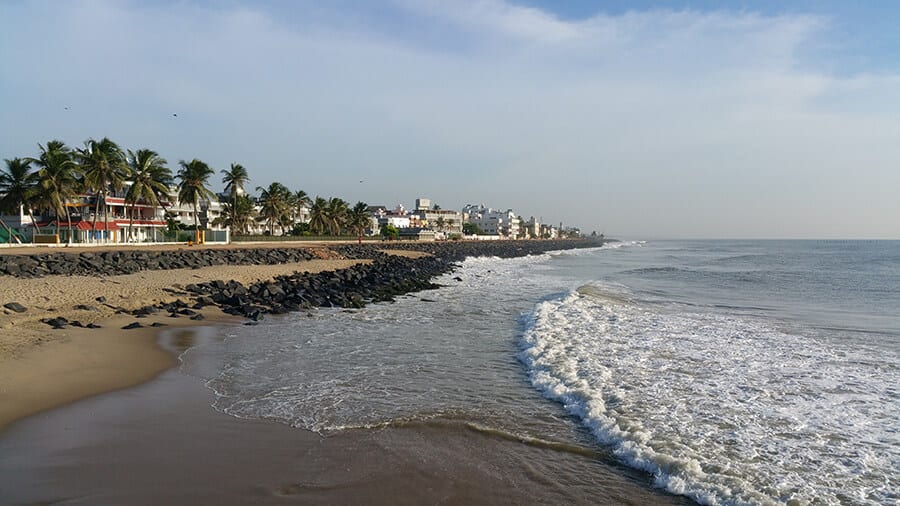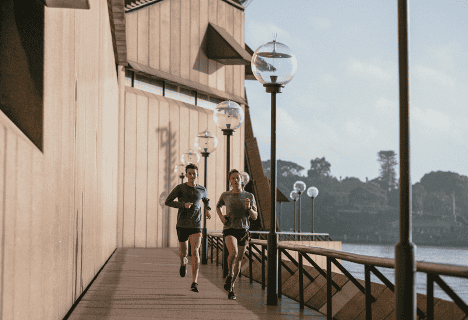Nestled in the Southern part of India, Pondicherry is often hailed as the “French Riviera of the East” and is a place where bougainvillea grow wild against the yellow walls of charming colonial bungalows, cozy cafes are abuzz with backpackers and locals alike, and the sound of waves crashing against Rock Beach, the whiff of spicy curries and crepes perfume the air, and magnificent French churches raise their steeples in an atmosphere of serenity and calm. This erstwhile French colony still retains the charm of days long ago, and a walk through the narrow streets of Pondicherry is likely to give one a taste of France in India.
A Colonial History
France was the dominant colonial power in the Indian sub-continent in the 17th and 18th centuries. Trading posts were established by the French East India Company at places that included Pondicherry, Chandernagore, Mahé, Karaikal, and Yanam.
These French colonies mostly spread along the coastlines, came to be known as Établissements français dans l’Inde or French Establishments in India. This was to be the beginning of a cross-exchange of spirituality, the arts, culture, and architecture. Even today, the spoken language in Pondicherry is a blend of the local dialect and French, the cuisine draws on the flavors and fragrances of both indigenous ingredients and French tradition, and the architecture has a distinctly European air about it.
The trading center at Pondicherry was set up in 1674, and eventually, this outpost became the chief French settlement in India. The French had come to India mainly with the purpose of trade and commerce; and under the first French Governor, Francois Martin, what was once a small fishing village turned into a flourishing port town.
Puducherry, however, had a thriving maritime history. Excavations at Arikamedu, about 7 kms south of the main town, have shown proof of Roman trade with this region as early as the 1st century.
The Dutch captured Puducherry in 1693 but returned it to France by the Treaty of Ryswick in 1699. In 1741, with the appointment of Joseph Francois Dupleix as the Governor of the French East India Company, the French tried to advance their position in the region.
Their hopes were only to be dashed with the arrival of Robert Clive, a ruthless British officer who landed in India in 1744. In 1761, the British marched into Pondicherry and nearly destroyed the city.
In 1765 the territory came back under French rule via the treaty of Paris. Pondicherry was then rebuilt, only to be invaded again by the British in 1776 and 1789. It was only in 1814 that Pondicherry was legally handed back to France. After all this bouncing around, Pondicherry was to remain in the French hands for the next 100 years.
The French transferred Puducherry to an independent India in 1954, and Pondicherry became a Union Territory. However, it was not until 1963 that Pondicherry became an integral part of the nation after the French Parliament in Paris ratified their treaty with India. of Francois Dupleix.
A Walk Down the Cobbled Streets of Pondicherry
The town of Pondicherry was divided into two parts, namely: the white Town or (ville de Blanc) and the Black Town (ville de Noire). The white town, situated close to the seashore, was meant for European settlement. The black town, located just west of the White Town, was inhabited by the local Tamils.
The French Quarter or White Town still retains beautiful, old French architecture. Street names like “Rue de la Marine” stand testimony to a bygone era of French administration.

Pondicherry is home to some of the finest churches in India. The Basilica of the Sacred Heart of Jesus is one of the most sacred places in Pondicherry and stands like an oriental version of Gothic architecture. Constructed by French missionaries in the 1700s, the church has beautiful stained-glass panels depicting the life of Jesus Christ.
The Immaculate Conception Cathedral is another church from the French era that is now almost 300 years old, making it one of the oldest tourist sites in Pondicherry. The Our Lady of Angels Church is the only church in the city that offers mass in three different languages – French, Tamil, and English.
Among the cultural organizations that speak of the French connection are the French Institute, the Alliance Francaise, and the Ecole Francaise d’Extreme Orient. At the corner of Rue de la Marine stands the French consulate, a building that is nearly three centuries old.
Other French establishments in Pondicherry include the French Institute of Pondicherry that was inaugurated in 1955 under the terms of the Treaty of cession of French Territories in India, and the Alliance Francaise de Pondichery that was inaugurated in 1889, among the first Alliances in the world after the one in Paris.
The French Slice
With its unique blend of French and Indian culture, Pondicherry has a lot to offer to food lovers. The Creole cuisine in Pondicherry is a true representation of how the authentic Tamil recipes are amalgamated with French cooking methods.
Creole food in Pondicherry is not only Franco-Tamil but also has Portuguese, Dutch and, in some dishes, Vietnamese and Bengali influences. There are a number of cafes with old colonial charm in the White Town that offer Creole cuisine. Café des Arts, Le Pondy, Le Dupleix, and Satsang are some names worth mentioning.
However, the most loved of them all is Le Café, situated right along the Promenade. Sipping your coffee as the waves of the sea break against the shore is an experience worth having.

Pondicherry is a place where the contemporary and the colonial, the materialistic, and the spiritual and the past and present wonderfully coexist. When in Pondicherry, do not be taken by surprise if a local autorickshaw-driver greets you with a resounding “Bonjour”.
The French connection is very much alive both in the hearts of its residents as well as in the streets that line this tranquil South Indian town.
Photos: Shutterstock
Read more from the author here.
Support us!
All your donations will be used to pay the magazine’s journalists and to support the ongoing costs of maintaining the site.
Share this post
Interested in co-operating with us?
We are open to co-operation from writers and businesses alike. You can reach us on our email at cooperations@youthtimemag.com/magazine@youthtimemag.com and we will get back to you as quick as we can.









